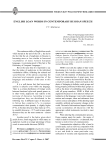Межкультурная коммуникация и сопоставительное изучение языков. Рубрика в журнале - Вестник Волгоградского государственного университета. Серия 2: Языкознание
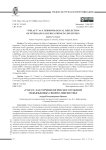
"Умлаут" как терминологическое отражение межъязыковых связей в лингвистике
Статья научная
Статья посвящена истории вхождения термина «умлаут» в терминологическую систему русской лингвистики. С использованием методов историко-лингвистического, дефиниционного и семантического анализа учебных и научно-теоретических источников (грамматик, грамматических трактатов и словарей), опубликованных в России в период с конца XVIII до середины XX в., автор прослеживает эволюцию фонетического статуса умлаута. Установлено, что в XVIII веке в русле традиций, заложенных создателями грамматик немецкого языка, умлаут считался дифтонгом, поскольку, согласно распространенному мнению, представляет собой сочетание двух совместно произносимых звуков. Показано, что в конце XVIII века подход к оценке статуса умлаута начинает меняться, что объясняется сменой научно-лингвистической парадигмы в русском языкознании. Выявлены и охарактеризованы факты терминологического варьирования. На протяжении своего существования термин «умлаут», который закрепился в русской лингвистической терминологии только к концу первой трети XX века, получил несколько однословных или составных наименований: «оголосок» (1799), «перемена гласных» (1844), «перезвук» (1845), «перегласовка» (1857), «слияние гласных» (1864), «изменение гласной» (1871), «перегласование» (1882), «суживание гласных» (1895). До настоящего времени сохраняется только синоним «перегласовка».
Бесплатно
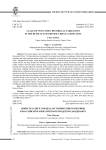
A tale of two cities: historical narratives in the Russian and Chinese urban landscapes
Статья научная
The present paper is part of a broader research “Language of a Big City: Media Urban Discourse in Russia and China”. Its theoretical basis is situated in the contact zone between narratology, critical discourse analysis, semiotics and urban communication studies. The investigation is carried out on the example of two big non-capital cities - Volgograd and Tianjin, which represent the social processes typical of modern urban communities. The research model used for the study includes the following dimensions: 1) types of urban narratives; 2) narrator; 3) audience (reader / listener / viewer); 4) plot; 5) time; 6) space; 7) typesofsemiotic signs; 8) intertextual connections. Theinvestigation proceeds from the idea about the textuality of the human mind, as well as the narrative ways of reality and identity construction. Multiple narratives can provide different urban history interpretations. Politicians use narratives to appropriate or reshape the past and the present as a common form of manipulation. Aspecific featureof urban historical narratives is that they do not possess fixed temporal boundaries and change due to the dynamics of urban social life. We argue that the stories that shape memories in the minds of general public are condensed versions of historical narratives based on the most intensely remembered facts, coloured with emotions and intensified by visual images, impressions and intertextual links. This idea emphasises the social responsibility of the creators of modern urban narratives in their different forms. The perspective of the research is to investigate the connection of these processes with Russian and Chinese mentality, values, logic ofmeaning-making and linguistic expression.
Бесплатно
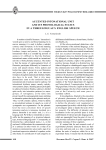
Accented intonational unit and its phonological status in a threelingual's English speech
Статья
Бесплатно
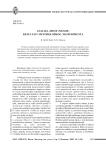
Analiza jedne pjesme: rezultati metodoloskog eksperimenta
Статья обзорная
The article is devoted to the methodological experiment aimed at finding out common and differentiating features in several interpretations on one poem. The author proves that methodologically diverse linguistic analysis and literary criticism concentrate on identical text fragments and come to similar conclusions, as opposed to the interpretations based on the author's commentaries.
Бесплатно
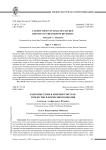
Closed topics in linguocultures: identity in the form of diversity
Статья научная
The present article deals with the meaningful and functional characteristics of the closed topics, that are the topics which are thought to be improper (taboo), and they are blocked in Russian, English and Chinese communication in a variety of ways. Their characteristics have not received a proper description in scientific works; therefore the study, based on the methods of semantic and communicative analysis, survey and comparison of the communication ways in different languages, aimed at filling the gap in probative identification of a list of closed topics, seems to be a current matter of interest. The authors use the term closedness and view it as an indicator of topic’s irrelevance that manifests itself with various language means. The article demonstrates the presence of a commonly shared list of closed topics in the above mentioned cultures. The possibility of reference to such topics in conversation is regulated by communication format, purpose and the degree of contact’s intimacy. The strategies of closed topic avoidance are marked with semantic replacement called mitigation and euphemism substitution. The study results ascertain that the closed topic list is shared by the Russian, English and Chinese cultures, but points to some differences in the way the conversations go. In conclusion the authors give a wide range of applications: from theoretical constructs that describe the mechanism of communication processes flow to the specific recommendations for optimizing communication in different spheres of human interaction.
Бесплатно
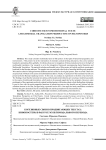
Cohesive Ties in Promotional Texts: A Multimodal Translation Perspective on Film Posters
Статья научная
This study considers multimodal texts of film posters in the light of functional pragmatics and intersemiosis. Film posters lie at the intersection of cinematic and advertising discourses, they cross national boundaries promoting films globally. It informs about our investigation of these promotional texts in the light of multimodal translation. Our research is set in the integrative framework encompassing Social Semiotics and Multimodal Translation. The material includes multimodal texts of film posters in English and their counterparts localized for the Russian audience. The sample texts are analyzed at the levels of meaning-building and reception. We examine cohesive linkages between different semiotic modes in the original posters, then we reveal if these ties are preserved or broken in the course of multimodal translation. Finally, we analyze how the translated versions are perceived by the Russian-speaking viewers. To this end, we conduct an experiment in the form of an interview. The findings reveal that the semantic ties uniting verbal and pictorial elements are not always rendered accurately in the course of multimodal translation, which tends to be assessed negatively by the recipients. However, some participants of the experiment positively evaluate localized posters with broken cohesive links finding them intriguing. It goes in line with the main pragmatic functions of advertising texts as they should not only inform but also stimulate interest in the film, intrigue being a powerful tool to do it. Our empirical study establishes correlation between the genre characteristics of a multimodal text and the perception of its intersemiotic ties.
Бесплатно
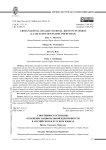
Cross-national rivalry: national identity in sports (a case study of English and Russian)
Статья научная
Nationalism and sport are often interwoven and, subsequently, the competitive nature of sport competition can also mirror the contentious nature between international athletes. Evidence of such inter-group conflict may manifest itself through ethnolinguistics and is reinforced through social identity theory. Data analysis for the English and Russian languages was evaluated in four categories. Data includes Word Association Network entries for the four opposites of the sport event schema in Russian and English: 1) strong - weak; 2) success - failure; 3) ahead - behind; 4) winner - loser. Semantic analysis established asymmetries of the lexical oppositions relative to sport competition, which reinforce the manifestation of social identity in ways that elevate the status of one group while degrading the perception of the other. The authors believe that this study exposes that the congruence between semantics and ethno-linguistics which is rooted in social identity. The four authors have equally contributed to this study. The contribution included a literature review on the subject of the study and showing how rivalry in sport is influenced by social identity and ethno-linguistics, which helped to identify the dearth of research into cultural implications underlying sports. The authors also collected dictionary definitions of the items of the sports event schema and performed analysis of the data in the English and Russian languages.
Бесплатно
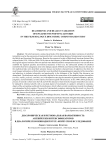
Статья научная
The article presents a corpus-based study of the diachronic and dialect variations of adverbial intensifiers used as the expression of emotionality that is a key defining feature of interpersonal conversation in the British and American film discourse. Based on the corpora of scripts of British and American feature films released in the 1930-1950s and 1990-2010s, data on the frequency of adverbial intensifiers in the sub-corpora of the English regional varieties of the two periods were obtained and their comparative analysis was carried out to establish the regional specifics and historical dynamics of their use; the collocation profiles of adverbial intensifiers that form syntagmatic units in the dialogic speech of British and American film discourse for each of the studied periods were described; semantic classes and stylistic characteristics of adjectives that form the most frequent collocations with the intensifiers were identified; the pragmalinguistic potential of the intensifiers and adjectives to indicate informality and emotionality in the dialogues of the English film discourse was determined. The diachronic analysis revealed a decline in the occurrences of the standard register intensifiers ( terribly , awfully , perfectly , extremely , etc.) with adjectives carrying the semantics of general evaluation, opinion, judgment, and emotionality in both corpora of modern English film discourse. In the 1990-2010s period, the process of renewal is observed in the UK and US film discourse when formerly frequent intensifiers are seen to be replaced by informal adverbs with a maximal degree of emotionality in speakers’ attitudes to situations, objects of the surrounding world and the interlocutor, which reflects a trend in preference towards the colloquial and substandard stylistic register. The growth of substandard vocabulary indicates that this trend is in line with the expectations of the English-speaking discursive communities that perceive film discourse as a reflection of authentic face-to-face discursive practices.
Бесплатно
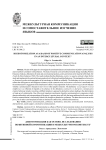
Dichotomization as a basis of positive communication analysis in an intercultural context
Статья научная
The aim of the paper is to investigate the constituent features and mechanisms of positive communication and reveal their correlation with politeness. The study is based on a mixed-method research design including Positive Discourse Analysis, dichotomic division and conversational analysis, and is carried out on the material of the book The Family by Nina Fedorova (1940). The results indicate that the dichotomy positive vs negative attitude is basic for the study and implements the contrast between good and evil, ethical and unethical behaviour. The juxtaposition of attraction vs disattraction refers to the perception of an interlocutor as likable or unlikable. The dichotomy activism vs passivism reflects the willingness or unwillingness to interact, while communication involvement vs alienation is associated with the communicator's engagement in the interlocutor's affairs. The juxtaposition of alterocentrism vs egocentrism indicates whether a communicator is focused on one's own or other people's interests. The dichotomy social support vs social indifference is a reflection of empathy or its absence. In the dichotomy constructive vs destructive communication creative behaviour aimed at resolving a difficult situation is opposed to destructive actions leading to the deterioration or break-up of a relationship. Оne of the most important constituents of positive communication is congruency which denotes authenticityand correspondence of the person's genuine inner selfwith the image addressed to the outer world. Positive communication is intrinsically linked with, though not identical to, politeness. The latter does not act as an aim per se, but is rather a tool employed to make an interaction conflict-free, smooth and harmonious.
Бесплатно
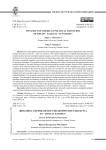
Dynamics of American political discourse of the 20th - early 21st centuries
Статья научная
The article addresses dynamics of conceptual space and communicative organization of the American political discourse in the 20th - early 21st centuries. The research objective is to identify transformations in the content of universal and nationally-marked concepts, as well as verbal modification of communicative strategies and tactics in the American political discourse of the periods under study. The main research methods applied are discourse, conceptual, semantic, and contextual analysis. The sampling corpus incorporates 662 public speeches of American presidents. The speeches under analysis belong to the ritual, orientational, and agonal genres of the political discourse. The main discourse-forming and nationally-marked concepts, features of the communicative structure of the American political discourse are established. The analysis of the metaphorical system as a way of realizing the intention in the American political discourse is carried out. The main types of conceptual metaphor, representing the discourse-forming concepts of the American political discourse are considered. The American political discourse conceptual space is more prone to transformations than its communicative structure in the studied timeframe. The nationally-marked concepts tend to be more dynamic than the universal discourse-forming concepts. The conceptual dynamism of the nationally-marked concepts manifests itself in the prevalence of the dominant features and the lacunarity at different stages of the American linguo-cultural community existence. The nationally-marked concepts components related to the historical and socio-cultural aspects of the speaking community life are brought into the open in the speeches of American presidents as transmitters of the national cultural values and role-status configurations in the political discourse of the 20th - early 21st centuries.
Бесплатно
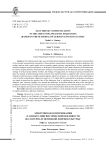
Статья научная
The article presents major ways of implementing linguistic politeness in electronic communication of the German linguocultural community. Following basic communicative principles of positive politeness, the authors analyze such e-mails speech acts as greeting, appeal, parting, congratulations, wishes, gratitude, that actualize strategies of positive politeness, or strategies of reconciliation in the virtual interaction of communicants. In German linguoculture the communicative strategies of reconciliation are the attention-and-care strategy, the strategy of using in-group identity markers, the strategy of exaggeration, the strategy of giving communicative gifts, the strategy of demonstrating intense interest; their implementation is supported with various means and methods of expressiveness, including contact appeals, adjectives, pronoun viel , modal verb mögen , performative verbs of wishes and gratitude, subjunctive mood, etc. It is stated that the communicative strategies of politeness are aimed at preserving the positive face of the addressee, that is, satisfying the needs of a person to show attention, care, interest, sympathy, love towards the addressee. It should be noted that study of the principle of politeness in email writing is viewed as a priority for German linguoculture, since communication via e-mail is one of the most popular and common ways of virtual written communication both at home and in business.
Бесплатно
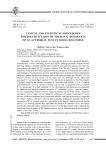
Статья научная
This article presents the experiential data on the dominant thematic characteristics of texts concerning fashion by English speaking columnists Hamish Bowles and Suzy Menkes, obtained with the aid of semantic and statistical analysis (the AntConc concordancer developed by Dr. Laurence Anthony from Waseda University Japan). The fragments of the texts have been examined from the perspective of functional and semantic representations of nominativeness, process, and attributiveness as the basic mental and linguistic categories. Among the dominant thematic units of the nominativeness are: “fashion” (22 %), “person” (20 %), “art and science” (10 %), “time” (4,5 %), “buildings” (4 %), “space and movement” (3 %), “inter-object relations” (3 %), and “plants and animals” (2 %). The category of process comprises the thematic categories of “movement and transfer” (23 %), “creation and modification” (19 %), “mental processes” (18 %) and “cooperation” (6 %), “speech” (5 %), “possession” (5 %) and “similarity” (4 %). The category of attributiveness is represented by adjectives that belong to thematic categories of “evaluation” (40 %), “color and shades” (13 %), “toponymical features” (10 %), “temporal features” (8 %), “size” (6 %), “materials and fabrics” (4 %), “shape” (3 %), “similarity / difference” (2 %) and “restriction” (2 %); by adverbs, which are frequented by circumstantial adverbs, realizing the meaning as suggested by “where”, “when”, and “how” (39 %), degree adverbs, fulfilling the semantic function of comparison (28 %), connective adverbs, responsible for the logical connection between lexical units (17 %), focusing adverbs that implement the function of restriction (9 %), and stance adverbs that reflect the author’s position in a text (7 %). The data may be used to objectify the lexical and thematic features of the thematic space or serve as reference material for conceptual studies of an author’s style.
Бесплатно
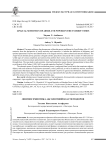
Lingual semiotics of absolute power in the Tudors’ times
Статья научная
The paper addresses the phenomenon of absolute power enablement in Great Britain of the 15th-16th centuries from the perspective of social semiotics and semantics: it includes the definition of obligatory and optional parameters of power and identification of its lingual-semiotic, ethno-cultural and semantic features. The Anglo-Saxon absolute power generates a lingual semiotic space that is structured with a system of verbal and non-verbal signs of various complexity and content; they perform their iconic, directive, evaluative and presentation functions to exercise maximum authoritative impact. Special attention is paid to royal rituals as the power is enabled through them. The case study reveals semiotic, ritual and nominative means of power representation in times of the royal dynasty of the Tudors (1485-1603), a period reputed as England’s “Golden Age”. The semantic space of Anglo-Saxon absolute power is composed from lexical units that nominate subjects, objects, tools and resources of royal power (economic, social, political), as well as its authority actions, conditions and processes that depict the stages of «birth, life and death” of power in general and formation, distribution and enactment of power in England of the Anglo-Saxon era, represented by the specific conceptual and lingua-cultural sphere by means of non-verbal (material) and verbal signs.
Бесплатно
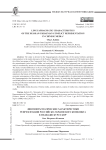
Linguapragmatic characteristics of the Russian-Ukrainian conflict representation in Chinese media
Статья научная
The study is devoted to the linguapragmatic characteristics of the special military operation representation in the media discourse of the People's Republic of China. The material of 230 media texts from the official newspaper of the Communist Party of China, People's Daily Newspaper, and 150 publications from the entertainment social network Zhihu was analysed. The research method proposed was a critical content analysis conducted by means of a concordancer programme with keyword extraction and thematic segmentation. The study revealed differences in the use of linguistic means of forming the image of Russia and identified the linguapragmatic features of the studied media texts, which consist in the emphasis on the historical and socialand-political context of the foreign policy events description. At the same time, social media texts paid more attention to the history of relations between Russia and Ukraine, while the official media described the political and economic consequences of the military conflict. The study shows the applicability of content analysis to identifying the linguapragmatics that characterises the image of the country by analysing the linguistic representation of social-and-political events and state institutions in media texts. Further research should be done to investigate the image of Russian institutions in the Chinese media in order to identify the formation of the image of Russia in the Chinese media.
Бесплатно
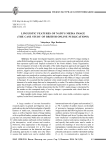
Linguistic features of NATO's media image (the case study of British online publications)
Статья научная
The paper investigates linguistic specific means of NATO's image making in online British leading newspapers. The case study involves news reports and analytical articles that represent explicit and implicit evaluation of the North Atlantic Treaty Organization. The investigation is based on the principles of the media linguistic approach and suggests the structural peculiarities of a media image that can be analyzed as a three-sided unit including positive, negative and neutral structural elements of image introduction into a media text. The NATO's image can be viewed as that of a geopolitical actor, creating its Natoland. Certain media topics are analyzed as creating positive and negative images of the NATO as a military organization. A finite list of positive and negative constituents to the Alliance's image is presented in the paper. It is assumed that the simplistic writer-reader model of interaction shapes certain elements of a media image that can be interpreted by a reader. The author distinguishes in the paper the principle constituents of an international organization in general, and the NATO in particular. Findings of the study demonstrate that the NATO's media image is interpreted by the readers as the conceptual entity of two key images: a peacemaker and a hawk that are restored on lexical and intertextual levels
Бесплатно
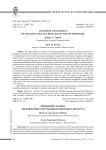
Linguistic pragmatics of english language restaurant online discourse
Статья научная
The paper presents an analysis of linguistic pragmatics of restaurant online discourse that is plunged into studying the content of English versions of British restaurant websites. The authors state that the investigated segment of virtual restaurant communication is organized on the basis of a linguistic-and-pragmatic model, which is constructed from the following components: discourse goal, discourse addresser's intention / communicative-pragmatic purposes with corresponding strategies and tactics. Special attention is paid to the main communication strategies of the discourse under analysis, among which there are the strategies of creating positive emotional mood, constructing an attractive image of the restaurant, increasing the activity of restaurant guests. It is established that these strategies are implemented by a set of tactics. The authors distinguish and describe verbal (lexical, lexical-grammatical and stylistic features), as well as non-verbal means that are used bysite moderators for implementing the desired tactics. It is stated that the most frequent linguistic means are lexical units with emotional-expressive and attitudinal meanings, metaphorical and pleonastic constructions, modal verbs, superlatives; interrogative-responsive and imperative structures; non-verbal means of communication are represented by graphics, font and colour highlighting, various illustrations and photographs. The suggested linguistic and pragmatic model uncovers the following restaurant online discourse regularities: location of zones with verbal or non-verbal dominating means is defined by visual assessment factors of information representation on the website.
Бесплатно

Lost in machine translation: contextual linguistic uncertainty
Статья научная
The article considers the issues related to the semantic, grammatical, stylistic and technical difficulties currently present in machine translation and compares its four main approaches: Rule-based ( RBMT ), Corpora-based ( CBMT ), Neural ( NMT ), and Hybrid ( HMT ). It also examines some “open systems”, which allow the correction or augmentation of content by the users themselves (“crowdsourced translation”). The authors of the article, native speakers presenting different countries (Russia, Greece, Malaysia, Japan and Serbia), tested the translation quality of the most representative phrases from the English, Russian, Greek, Malay and Japanese languages by using different machine translation systems: PROMT (RBMT), Yandex.Translate (HMT) and Google Translate (NMT). The test results presented by the authors show low “comprehension level” of semantic, linguistic and pragmatic contexts of translated texts, mistranslations of rare and culture-specific words, unnecessary translation of proper names, as well as a low rate of idiomatic phrase and metaphor recognition. It is argued that the development of machine translation requires incorporation of literal, conceptual, and content- and-contextual forms of meaning processing into text translation expansion of metaphor corpora and contextological dictionaries, and implementation of different types and styles of translation, which take into account gender peculiarities, specific dialects and idiolects of users. The problem of untranslatability (‘linguistic relativity') of the concepts, unique to a particular culture, has been reviewed from the perspective of machine translation. It has also been shown, that the translation of booming Internet slang, where national languages merge with English, is almost impossible without human correction.
Бесплатно
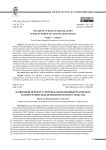
Machine vs human translation in the synergetic translation space
Статья научная
The paper focuses on English-to-Russian translations of patent applications on the website of the World Intellectual Property Organization (WIPO). A comparative analysis of patent applications is performed by using translations made with the help of the WIPO Translate tool and human translators within the framework of the synergetic translation space concept encompassing the domains of the author's intensions, text content and composition, energy, translator, recipient, and the translation acceptability notion. The translation erratology aspects were considered from the point of view of the semantic, referential, and syntactic ambiguity within the domains of content-composition and energy space. In the domain of the author, the intention to convey some technical information is revealed, while its rendering in the content-composition and energy domains depends on whether the translation is made by a person or a machine. Genre- and composition-related specifics have been rendered in both cases while machine translation errors have been proven to result from the semantic, referential, or syntactic ambiguity, and this is when the translated output is generally considered unacceptable by the recipient. The results obtained can be used for editing machine translations of patent documentation, assessing the quality of technical documentation translation that is referred to other specific genre conventions.
Бесплатно
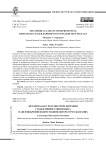
Metaphor as a means of representing first-hand cancer experience in English teen sick-lit
Статья научная
The present paper is a contribution to the study of cancer metaphors in contemporary English. It focuses on the ways cancer is conceptualized in teen sick-lit, a relatively new genre of children's literature which presents stories of severe illnesses that afflict teenagers, cancer being the most important of them. The analysis is based on four novels that employ the first-person narrative mode. It rests upon the Conceptual Metaphor Theory, utilizing such specific research instruments as the Career of Metaphor Theory (B. Bowdle and D. Gentner) and the concept of metaphorical creativity (Z. Kovecses). The novelty of the research angle is that the paper takes a differentiated approach towards cancer metaphor analysis, first identifying thematic groups relevant to cancer experience and then tracing patterns of metaphor use within each group. The four groups presented in the study are metaphors of cancer itself, cancer patients, diagnostic procedures and treatments, and physical and emotional conditions of patients. It is proved that there are metaphors that demonstrate a strong inclination to reflect only one aspect of cancer experience. Thus, the actively promoted journey metaphor appears suitable only for conceptualizing procedures and treatments, while war metaphor proves versatile. Further on, the paper analyzes instances of the war metaphor use proving that far from being obsolete, it has a considerable conceptual and communicative potential and can be developed further.
Бесплатно

